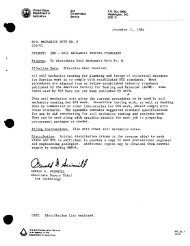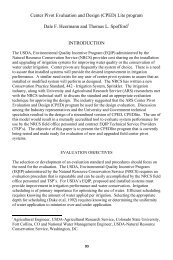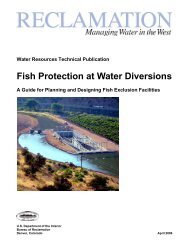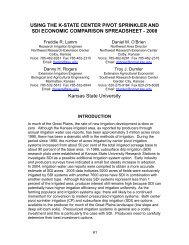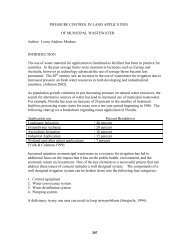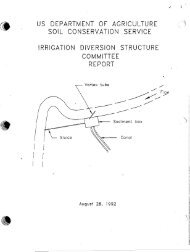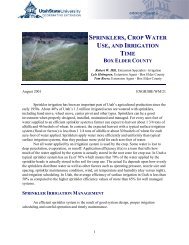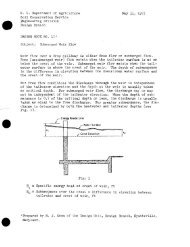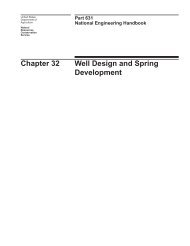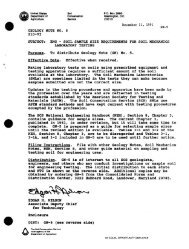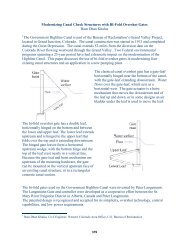NEH 16 Chapter 1 - NRCS Irrigation ToolBox Home Page
NEH 16 Chapter 1 - NRCS Irrigation ToolBox Home Page
NEH 16 Chapter 1 - NRCS Irrigation ToolBox Home Page
You also want an ePaper? Increase the reach of your titles
YUMPU automatically turns print PDFs into web optimized ePapers that Google loves.
This equation neglects the curvilinear flow due to the drawdown shape. The erroris not large if rl and r2 are sufficiently large so that the curvature is negligible.The equation may be used to predict the draw-down curve and radius ofeffective influence. It is useful also for computing the hydraulic conductivityfrom field-pumping tests. Two or more observation wells are installed at differentdistances from the pumped well. The nearest observation well should not be closerto the pumped well than 100 times the well radius.Confined-aquifer or artesian wellsCorresponding to the equation for unconfined aquifers, the Dupuit equation forconfined aquifers becomes:where Q = flow into well, with dimensions L~/TK = hydraulic conductivity, L/Tm = thickness of' aquifer, in units of Ly1 and y2 = depth from bottom of aquifer to pressure surface, at distancesr1 and r2 from the well, respectively, all in units of L.Additional information on the hydraulics of wells may be obtained from <strong>NEH</strong>,Section 18, Ground Water, pp 1-12 to 1-18.Basis for design of pumped-drainage wellsThe above equations are for the equilibrium or steady-state condition. Similarrelations have been derived for use in the nonsteady state, such as in situationswhere pumped wells continue to deplete stored water.Pumping from confined aquifers usually is steady throughout the season becausethe aquifers are deep and replenish slowly and uniformly. But water-table wellsmay be used for either short-time drawdown or near-constant seasonal discharge.Therefore, their design should be based on two considerations:'1. Capacity should be sufficient to lower the water table after irrigation,heavy precipitation, or other influent seepage, in a relatively shorttime to avoid crop damage.2. Capacity should be sufficient to remove at least the seasonal netreplenishment, which is the ground-water replenishment less depletionsfrom causes other than the pumped well in question. Shorter pumpingperiods may be required for this analysis, such as 1-, 2-, or 3-monthperiods.Advantages of pumped-well drainageA high initial and operating cost for a pumped well for land drainage may be offsetby a number of its advantages over a shallow drain system. Some of these are:1. The water table may be lowered to much greater depths.2. Deep strata may be much more permeable than those nearer the surface.



